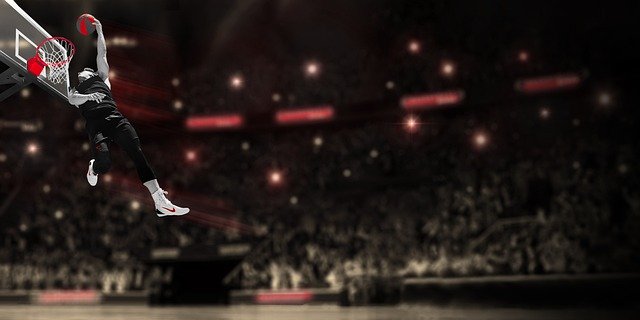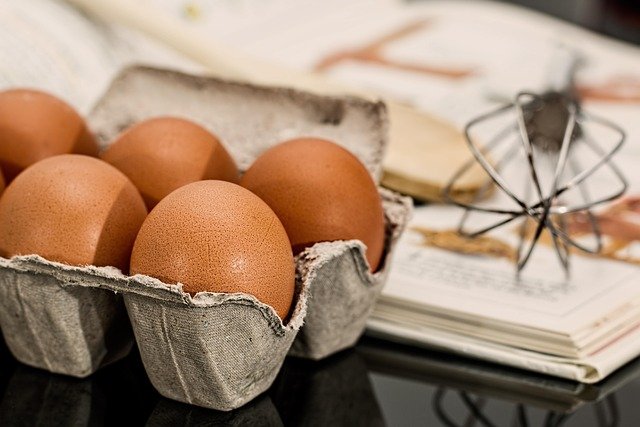Biomechanics of Basketball Shooting: The Art and Science of the Perfect Shot
The swish of the net, the roar of the crowd, and the satisfaction of a perfectly executed basketball shot. Behind this seemingly simple action lies a complex interplay of biomechanics, physics, and years of practice. This article delves into the fascinating world of basketball shooting mechanics, exploring how the body's movements, angles, and forces combine to create that magical moment when the ball sails through the hoop.

As the shot begins, players initiate an upward motion, extending their legs and arms simultaneously. This coordinated movement transfers energy from the ground up through the body, culminating in the release of the ball. The follow-through is crucial, with the shooting hand extending fully and the wrist snapping downward, creating backspin on the ball.
Understanding these fundamentals is essential, but mastering them requires countless hours of practice and refinement. Elite shooters develop a consistent routine that becomes muscle memory, allowing them to replicate their form even under the pressure of competition.
The Physics of Flight: Trajectory and Spin
Once the ball leaves the shooter’s hands, it becomes subject to the laws of physics. The optimal trajectory for a basketball shot is typically around 45 degrees, though this can vary slightly based on the player’s height and distance from the basket. This angle provides the best balance between the horizontal distance the ball needs to travel and the vertical arc that increases the chances of the ball falling through the hoop.
Backspin is another crucial element of a well-executed shot. As the ball rotates backward, it creates a cushion of air beneath it, providing lift and stability during flight. This spin also increases the chances of a favorable bounce off the rim or backboard if the shot isn’t perfect. The ideal backspin rate is about three revolutions per second, achieved through proper wrist snap at release.
Understanding these physical principles allows players and coaches to fine-tune shooting techniques for maximum efficiency. It’s not just about strength or accuracy, but about working with the laws of nature to increase the probability of success.
Kinetic Chain: From Toes to Fingertips
Shooting a basketball is a full-body action that relies on the kinetic chain - the interconnected system of body segments working together to produce movement. This chain begins at the feet and travels up through the legs, core, arms, and finally to the fingertips.
The power for a shot starts in the legs, with a slight knee bend followed by explosive extension. This force travels up through the hips and core, which rotate slightly to align the upper body with the basket. The shoulders and arms then come into play, with the elbow extending and the wrist snapping to release the ball.
Proper sequencing of this kinetic chain is critical for an efficient and accurate shot. Any break in the chain - such as releasing too early or failing to engage the core - can lead to inconsistency and reduced power. Elite shooters have honed this sequence to near perfection, creating a smooth, fluid motion that maximizes energy transfer and accuracy.
The Role of Proprioception in Shooting Accuracy
Proprioception, often called the “sixth sense,” refers to the body’s ability to sense its position and movement in space. In basketball shooting, this sense is crucial for consistently replicating the complex motions required for an accurate shot.
As players practice, they develop a keen awareness of how their body should feel during each phase of the shot. This internal feedback allows them to make micro-adjustments in real-time, compensating for factors like fatigue or defensive pressure.
Enhancing proprioception can significantly improve shooting accuracy. Drills that challenge balance, such as shooting on one foot or with eyes closed, can heighten this sense. Additionally, visualization techniques help players mentally rehearse the perfect shot, strengthening the neural pathways associated with proper form.
Biomechanical Analysis: Tools and Techniques
Modern technology has revolutionized our understanding of shooting mechanics. High-speed cameras can capture minute details of a player’s form, while force plates measure the ground reaction forces during the shot. Motion capture systems create 3D models of the shooting motion, allowing for detailed analysis of joint angles and velocities.
These tools provide coaches and players with objective data to identify areas for improvement. For example, analysis might reveal that a player’s release point is inconsistent or that they’re not fully extending their elbow, leading to reduced power and accuracy.
Biomechanical analysis has also shed light on the differences between various shooting styles. The traditional set shot, the jump shot, and the increasingly popular one-motion shot each have unique biomechanical profiles. Understanding these differences allows coaches to tailor instruction to a player’s natural tendencies and physical attributes.
Adaptations for Different Shot Types
While the fundamentals of shooting remain constant, different game situations require adaptations to the basic form. Free throws, for instance, allow for a more deliberate and consistent approach. Without the pressure of a defender, players can focus on perfecting their mechanics and developing a reliable routine.
Jump shots introduce the additional challenge of coordinating the shot with the jumping motion. The release point typically comes at the peak of the jump, requiring precise timing and body control. As players move further from the basket, they must generate more power from their legs and core to maintain accuracy at longer distances.
Three-point shooting has become increasingly important in modern basketball, leading to adaptations in shooting mechanics. Many players now favor a quicker release and a slightly flatter trajectory to compensate for the increased distance. The one-motion shot, where the upward motion of the jump flows seamlessly into the shot release, has gained popularity for its efficiency and speed.
The Mental Game: Psychology of Shooting
While biomechanics forms the foundation of good shooting, the psychological aspect cannot be overlooked. Confidence plays a crucial role in shooting success, with research showing that players who believe in their abilities are more likely to perform well under pressure.
Developing a consistent pre-shot routine can help players enter the right mental state for shooting. This routine might include taking a deep breath, visualizing the shot, or performing a specific physical gesture. These actions serve as a trigger for the brain, signaling that it’s time to focus and execute the learned shooting mechanics.
Pressure situations, such as game-winning shots or free throws in the final seconds, present unique challenges. In these moments, players must rely on their training and muscle memory to overcome the mental stress. Techniques like mindfulness and controlled breathing can help maintain focus and prevent overthinking.
Injury Prevention and Shooting Mechanics
Proper shooting mechanics not only improve accuracy but also play a crucial role in injury prevention. The repetitive nature of shooting can lead to overuse injuries, particularly in the shoulder, elbow, and wrist. Understanding and implementing correct biomechanics can significantly reduce the risk of these injuries.
One common issue is the “elbow flare,” where the shooting elbow points outward instead of aligning with the basket. This not only reduces accuracy but also places undue stress on the shoulder joint. Correcting this alignment can improve both performance and long-term joint health.
Similarly, proper lower body mechanics are essential for preventing knee and ankle injuries. A balanced stance and smooth transfer of weight during the shot help distribute forces evenly, reducing the risk of strain on any single joint.
Training Techniques for Improved Shooting Biomechanics
Enhancing shooting mechanics requires a combination of targeted drills and technology-assisted feedback. Form shooting drills, where players focus on perfecting their technique at close range without worrying about making the shot, are fundamental. These drills ingrain proper mechanics and build muscle memory.
Progressive training methods gradually increase the challenge. This might involve shooting from different distances, adding defensive pressure, or incorporating fatigue elements to simulate game conditions. Each progression forces the player to maintain proper mechanics under increasingly difficult circumstances.
Technology plays an increasingly important role in shooting training. Shot-tracking systems provide instant feedback on factors like arc, spin rate, and release speed. Virtual reality systems allow players to practice in simulated game environments, combining physical execution with decision-making skills.
The Future of Shooting Biomechanics
As our understanding of human biomechanics and sports science continues to evolve, so too will our approach to basketball shooting. Emerging technologies like artificial intelligence and machine learning promise to revolutionize how we analyze and improve shooting mechanics.
AI-powered systems could provide real-time feedback during practice, instantly identifying deviations from optimal form and suggesting corrections. Machine learning algorithms might analyze vast datasets of successful shooters to identify previously unrecognized factors contributing to accuracy.
Advances in materials science may lead to new basketball designs that optimize factors like grip and aerodynamics, potentially altering shooting techniques. Similarly, innovations in footwear and apparel could enhance players’ ability to generate power and maintain stability during shots.
The integration of neuroscience into sports training also holds promise for shooting improvement. Techniques like neurofeedback could help players achieve optimal brain states for focus and motor control, potentially leading to more consistent shooting performance.
The Ongoing Quest for the Perfect Shot
The biomechanics of basketball shooting represents a fascinating intersection of physics, physiology, and psychology. From the precise movements of joints and muscles to the mental fortitude required in high-pressure situations, every aspect of shooting is ripe for analysis and optimization.
As we continue to push the boundaries of human performance, the quest for the perfect shot evolves. Today’s insights into biomechanics and training methodologies lay the groundwork for tomorrow’s innovations. Whether you’re a professional athlete, a weekend warrior, or simply a fan of the game, understanding the science behind the art of shooting can deepen your appreciation for this fundamental basketball skill.
The journey to mastery in basketball shooting is ongoing, with each generation building upon the knowledge of the last. As we look to the future, one thing remains certain: the pursuit of the perfect shot will continue to captivate players, coaches, and scientists alike, driving innovation and pushing the limits of human potential on the basketball court.





